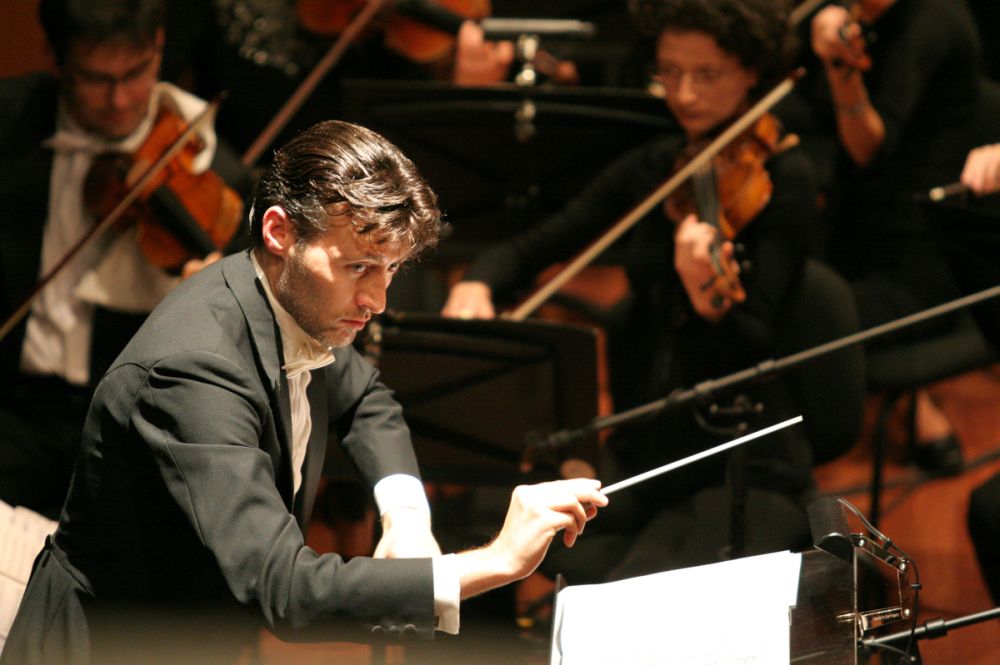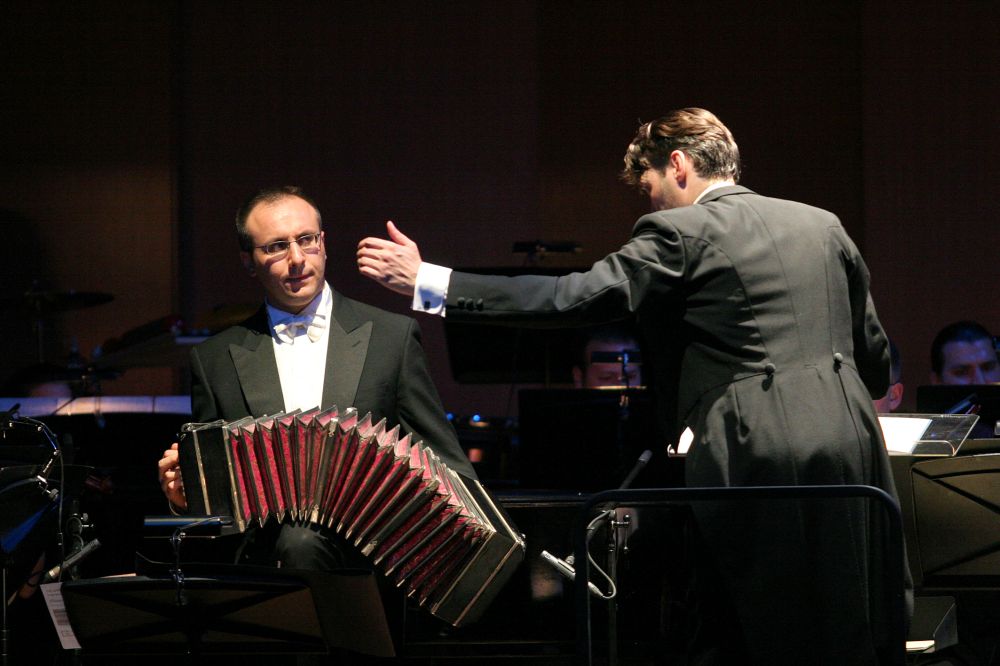A travel in the world of tango from Gardel to Piazzolla
“A sad thought to dance”.
Through this well-known and over-used definition of the tango, Enrique Santos Discepolo (born 1901, died 1951) synthesized better than anybody else the real “soul” of something which is not only a musical genre and a dance, but also a widespread social phenomenon which characterized a whole age. Born in the 1880’s on the outskirts of the big capitals of Buenos Aires and Montevideo, the tango originated in the same period and in the same way of the jazz music. As a matter of fact, if the latter developed from the interaction of different cultures, in that melting pot of races that was New Orleans at the end of the 1800, exactly in the same years, the tango came to light in a Buenos Aires which was literally crowded following the European wave of immigration, made most of all of Spanish and Italian people and of nomadic farmers, who, having moved to the town, felt bewildered as if they had lost their original, rural culture.
Like the jazz of the very beginning, which moved its first steps in the brothels of Storyville, the tango as well, flourished in the brothels nearby the barracks and the harbour. They both became symbol of social alienation and were linked to the most disinherited components of the society, to which they belong. It is in these situations of extreme cultural unsteadiness that the music becomes a genuine expression of the uneasiness of an entire population and the tango tells stories of violence and crime taking place in the most degraded and poorest neighbourhoods of the city.
From the sheer musical point of view, the tango originates from the mixture between the habanera and the milonga and it soon turns from a dance into a song, after the addition of lyrics. In the tango lyrics, the most common topics are: the city with its streets and sidewalks, further proof of the city origin of the tango; the brittle, failed, and hopeless loves, the night linked to melancholy and tears, the time conceived as a one-way path that cancels and kills, that escapes and ruins everything.
Together with the first successes of this musical genre, the first tango stars as well, both singers and famous dancers, began to enjoy a certain degree of popularity and from the beginning of the 1900, Europe was struck by a real “tango-mania” which showed new and unexpected aspects as it became most of all, prerogative of nobles and governors.
After a century of undisputed rule, the waltz seemed to have lost its outrageous appeal and the old continent was deeply fascinated by this new dance, made of very complex steps and characterised by a clear erotic potential, that, if on the one hand managed to seduce and intrigue the upper-class members in an irresistible way, on the other hand triggered the polemical vein of the conventional thinkers and of the Church, of course, that had previously hurled its anathema against the “purer” waltz.
Among the most popular singers, Carlos Gardel (born 1887, died 1935) was a real pop idol and it is considered the voice of tango par excellence. In order to have an idea of the success and popularity he enjoyed, we can mention the words of Meri Lao, who stated: “that of Gardel was a musical phenomenon comparable to that triggered by Caruso and later on by Elvis Presley”.
His tragic death in a plane accident on the 24th of June, 1935, strengthened his myth and his funeral rites which took place in a stadium in Buenos Aires, were attended by thousands of people.
As already mentioned, the tango was originally born as instrumental music aimed at dancing. The typical musical instruments of tango became the violin, affectionately nicknamed “jamòn” (ham), the piano, the double bass and most of all the bandonion, a sort of accordion of German origin, which arrived and obtained popularity in Argentina, probably after the kaleidoscopic European immigration in Latin America.
“Tango Forever” is a show that, in its first part, proposes some of the most significant pieces in the history of tango, with lyrics enriched with the evocative verses written by the poet Jorge Luis Borges (born 1899, died 1986), that has the target to lead the listener through this fascinating journey. The first part of the show ends with a symbolical handling over of power from Gardel to Piazzolla, a composer died ten years ago and to whom the second part of the concert is dedicated. It goes without saying that it is impossible to talk about the tango without paying tribute to Astor Piazzolla (born 1921, died 1992), whose musical pieces in this last decade, have populated the concert halls and the recording lists of the entire world. Astor Piazzolla, known as a controversial figure, makes his debut on the musical stage around the middle of the ‘50s, a moment when from the creative point of view, the tango was going through a slack period. Piazzolla, a cultured musician, first studied with Alberto Ginastera in his home country and then he carried on his musical studies in Europe, where he studied orchestral conduct with Herman Scherchen and composition with Nadia Boulanger.
He performed a reformatory intervention in the “tango” and through an intellectual veer; he turned this genre into a sophisticated music, made to be listened within concert halls instead of dance halls. Mentioning Piazzolla’s words, through his compositions “… a new tango appeared, an intellectual tango, a tango to think, a tango not to dance and not to sing, a tango that is not old, that is not traditional, a tango in a certain way, close to chamber music…”
But in Argentina the tango was a deeply rooted reality and represented a reason of national pride; that is the reason why the intervention carried out by Piazzolla was considered in his home country, a real profanation, so that the composer went through years of clear boycott from the critics and from the record companies and of suspiciousness from part of the audience.
The pieces chosen by the sextet represent some of the most interesting and at the same time less played works of the composer: from an unusual “sacred” Piazzolla with his “Ave Maria”, to a concert for bandonion divided into three movements of the classical concert, to the Milonga de la Anunciaciòn, taken by the ambitious tango-opera Maria De Buenos Aires, composed on a text written by Horacio Ferrer.
The separation from the dance, the value attributed to the instrumental texture, the bent for improvisation, the particular richness of the harmonic solutions, make Piazzolla’s music an elegant synthesis that remains, in spite of all, strongly tango.
Time has therefore, given reason to Astor Piazzolla, whose cross dimension of modern musician, in the most prolific sense of the term, allowed him to be appreciated, in the musical field, as one of the most interesting leading personalities of the post war.
Direction & Arrangements
Giuliano Di Giuseppe












